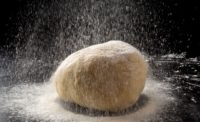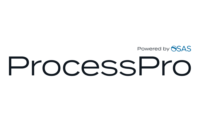ROI's Formula Must Include Quality
Companies like Kemper
Bakery Systems do more than just help bakery owners run a complete ROI with its
information.

When it comes to automating bread, customers want to know three things: Will it work, will it be supported and is this going to pay? While a standard return on investment (ROI) formula provides a guideline, it doesn’t take in the entire picture.
That’s why companies like Kemper Bakery Systems, the North American subsidiary of WP Bakery Group, located in Germany, do more than just help bakery owners run a complete ROI with its information.
“We also emphasize that consistency must also be considered in the equation,” says Patricia Kennedy, president of the Shelton, Conn.-based company.
For instance, Ruben Barrera, part owner and head baker at PANoRAMA, has been running the WP Crustica automated bread line for more than a year in his San Francisco wholesale shop, and he now vouches for its ability to produce products consistently.
“The quality is great,” he says. “I believe that the Crustica is superior to any of the French or Italian machines available. We believe the ROI to be three years at current sales [3,000 to 5,000 loaves a day], and we are expanding.”
Most importantly, Kennedy adds, Kemper Bakery Systems always tries to conduct a review of a bakery’s entire process to determine other areas that could be changed to improve quality and ensure a solid ROI.
“If a bakery only looks at the make-up, yet doesn't address issues they may be having in the mixing, proofing or oven loading area, then they may save in one area but defeat that savings because the ineffectiveness in other areas drains the savings,” she says. “What defines our philosophy at WP Bakery Group is to ‘think process’ and to consult with our customers on how to improve their business and bring the best ROI in all areas of production.”
Before a bakery can begin making its ROI calculations, it has to develop a realistic understanding of its requirements. In other words, bakers need to know their needs before committing to a product. That often requires a comprehensive view of the bakery’s operations.
“When a customer is interested in, say, the WP Crustica, the first thing that we do is gather all the information about the customer’s products,” Kennedy says. “We like to take pictures of every single product so that there is a visual quality point.”
Kemper does a complete analysis of the bakery’s process and gathers specific details on the company’s products such as formula, flour data, pre-fermentation process, weight, floor time after mixing and moulding, as well as throughput per hour and volume per day that the bakery produces and expects to produce in the future.
“This way, our engineering department can specify and design the systems specifically for the customers needs,” Kennedy notes, “and we build the machine not just for today but for their needs tomorrow.”
Experts warn that if a company makes a cheaper purchase that meets all its needs, a bakery might actually undermine its ROI if it tries to push the system beyond its capabilities. Rather, a company is more likely to succeed if it uses advanced pieces of equipment to its full capacity to sell more products or work more efficiently.
So how do bakers calculate ROI accurately? How do they weigh all the factors before obtaining realistic values for their investment and their eventual savings?
The true costs may go well beyond purchase price and include installation and maintenance expenses. It may well include user-friendliness, including how easy the system is to learn, how long it takes to set up for a job and how hard it is to maintain. Other variables may involve financing costs, shipping, taxes, operational costs and the footprint a machine takes up on a crowded shop floor.
User-friendliness should be a cost factor because it reduces training time and operator errors.
Barrera reports the Crustica is easy to run once operators get the hang of it.
“It did take a few weeks to learn,” he says, “and then everything ran easier than ever before.”
When it comes to maintenance, Barerra’s company spends a few minutes between doughs or breaks and 30 minutes at the end of the day cleaning the Crustica.
“Maintenance needed is usually minimal,” he says.
As far as footprint, Bererra adds, “the Crustica has made the space and flow better.”
“We put the Crustica in a corner that was wasted space and do not need as much bench or people space,” he explains.
Increased speed, efficiency, production and revenue – these are typical expectations for new equipment acquisitions.
Much depends on the kind and amount of use a machine will get and the bakery’s overall production capacity. Downtime kills ROI.
Typically, says Barrera, it takes two to three minutes to changeover to different bread type. As a result, downtime is negligible on the Crustica. As for labor savings, he adds, “the Crustica easily helps us make more with fewer men in less time. Now, we almost never have overtime.”
What’s more, Barrera reports a 20% growth without adding personnel or rearranging work schedules.
“I would and I will buy another Crustica if we continue to grow like I think we will,” Barrera says.
Editor’s Note: Kemper Bakery Systems Ltd. supplied information for this article. For more information, visit www.kemperusa.com.

When it comes to automating bread, customers want to know three things: Will it work, will it be supported and is this going to pay? While a standard return on investment (ROI) formula provides a guideline, it doesn’t take in the entire picture.
That’s why companies like Kemper Bakery Systems, the North American subsidiary of WP Bakery Group, located in Germany, do more than just help bakery owners run a complete ROI with its information.
“We also emphasize that consistency must also be considered in the equation,” says Patricia Kennedy, president of the Shelton, Conn.-based company.
For instance, Ruben Barrera, part owner and head baker at PANoRAMA, has been running the WP Crustica automated bread line for more than a year in his San Francisco wholesale shop, and he now vouches for its ability to produce products consistently.
“The quality is great,” he says. “I believe that the Crustica is superior to any of the French or Italian machines available. We believe the ROI to be three years at current sales [3,000 to 5,000 loaves a day], and we are expanding.”
Most importantly, Kennedy adds, Kemper Bakery Systems always tries to conduct a review of a bakery’s entire process to determine other areas that could be changed to improve quality and ensure a solid ROI.
“If a bakery only looks at the make-up, yet doesn't address issues they may be having in the mixing, proofing or oven loading area, then they may save in one area but defeat that savings because the ineffectiveness in other areas drains the savings,” she says. “What defines our philosophy at WP Bakery Group is to ‘think process’ and to consult with our customers on how to improve their business and bring the best ROI in all areas of production.”
Before a bakery can begin making its ROI calculations, it has to develop a realistic understanding of its requirements. In other words, bakers need to know their needs before committing to a product. That often requires a comprehensive view of the bakery’s operations.
“When a customer is interested in, say, the WP Crustica, the first thing that we do is gather all the information about the customer’s products,” Kennedy says. “We like to take pictures of every single product so that there is a visual quality point.”
Kemper does a complete analysis of the bakery’s process and gathers specific details on the company’s products such as formula, flour data, pre-fermentation process, weight, floor time after mixing and moulding, as well as throughput per hour and volume per day that the bakery produces and expects to produce in the future.
“This way, our engineering department can specify and design the systems specifically for the customers needs,” Kennedy notes, “and we build the machine not just for today but for their needs tomorrow.”
Experts warn that if a company makes a cheaper purchase that meets all its needs, a bakery might actually undermine its ROI if it tries to push the system beyond its capabilities. Rather, a company is more likely to succeed if it uses advanced pieces of equipment to its full capacity to sell more products or work more efficiently.
So how do bakers calculate ROI accurately? How do they weigh all the factors before obtaining realistic values for their investment and their eventual savings?
The true costs may go well beyond purchase price and include installation and maintenance expenses. It may well include user-friendliness, including how easy the system is to learn, how long it takes to set up for a job and how hard it is to maintain. Other variables may involve financing costs, shipping, taxes, operational costs and the footprint a machine takes up on a crowded shop floor.
User-friendliness should be a cost factor because it reduces training time and operator errors.
Barrera reports the Crustica is easy to run once operators get the hang of it.
“It did take a few weeks to learn,” he says, “and then everything ran easier than ever before.”
When it comes to maintenance, Barerra’s company spends a few minutes between doughs or breaks and 30 minutes at the end of the day cleaning the Crustica.
“Maintenance needed is usually minimal,” he says.
As far as footprint, Bererra adds, “the Crustica has made the space and flow better.”
“We put the Crustica in a corner that was wasted space and do not need as much bench or people space,” he explains.
Increased speed, efficiency, production and revenue – these are typical expectations for new equipment acquisitions.
Much depends on the kind and amount of use a machine will get and the bakery’s overall production capacity. Downtime kills ROI.
Typically, says Barrera, it takes two to three minutes to changeover to different bread type. As a result, downtime is negligible on the Crustica. As for labor savings, he adds, “the Crustica easily helps us make more with fewer men in less time. Now, we almost never have overtime.”
What’s more, Barrera reports a 20% growth without adding personnel or rearranging work schedules.
“I would and I will buy another Crustica if we continue to grow like I think we will,” Barrera says.
Editor’s Note: Kemper Bakery Systems Ltd. supplied information for this article. For more information, visit www.kemperusa.com.
Looking for a reprint of this article?
From high-res PDFs to custom plaques, order your copy today!








